Dining table in the kitchen interior: main dimensions
To correctly determine the size of the table, you need to consider how many people you want to seat at the same time – and everyone should be comfortable. Ergonomics says that at least 70 cm of tabletop length is needed for each. Therefore, if two people are to sit on one side, the table length cannot be less than 140 cm. Otherwise, you will have to “crowd together”.
A square table, with one side against the wall, can accommodate three people – if the side length is at least 70 cm. A comfortable rectangular table should be at least 75 cm wide, and a round table should be 90 cm in diameter. For a small kitchen, the optimal countertop size is 60-80 cm, in large kitchen-dining rooms – from 120 cm.
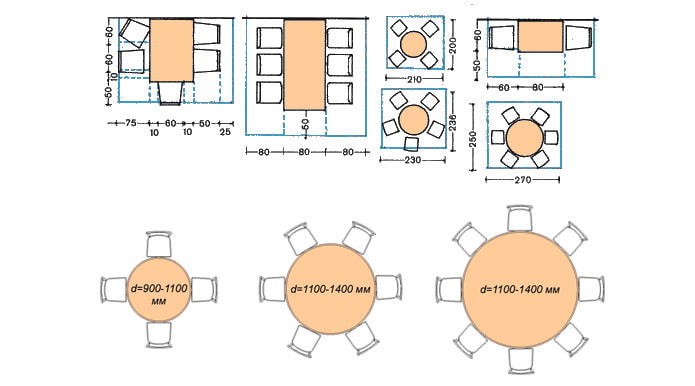

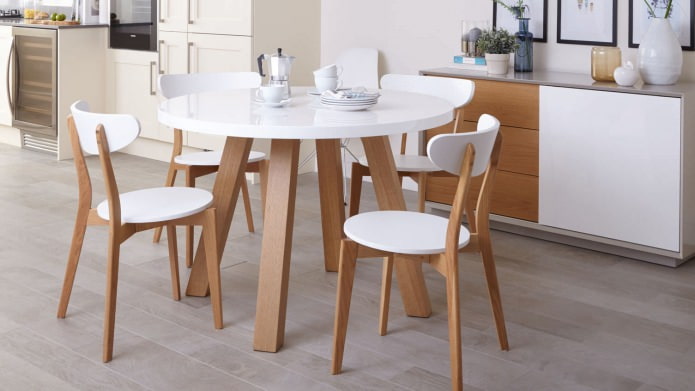
Kitchen table material in the kitchen interior
The appearance of the table and how it will look in the interior depend on the material from which the tabletop is made. The material of the table base also matters, but it affects durability rather than appearance. You can find models on the market with tabletops made of the following materials:
- MDF. This is the most budget option. The outer coating of the tabletop can imitate natural materials. A table in the kitchen interior with an MDF tabletop looks good and is sufficiently resistant to mechanical damage, as well as moisture, excluding joints with the edge. If water gets there, the chipboard, which the base is made of, can swell and deform. That is why such tables have a short service life.
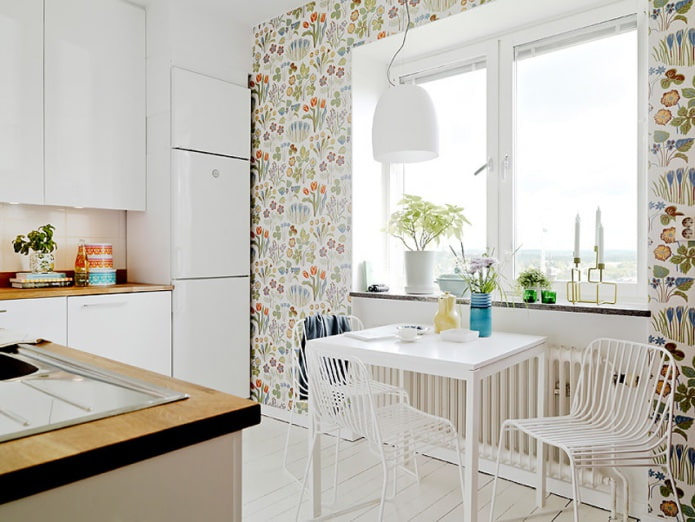
- Wood. The traditional and most popular option. Wood can withstand moisture, has an attractive appearance, and when coated with special compounds, it acquires dirt-repellent properties. The kitchen interior with a large table made of wood looks solid and expensive. Wooden furniture lasts a long time, although it requires careful handling and periodic restoration.
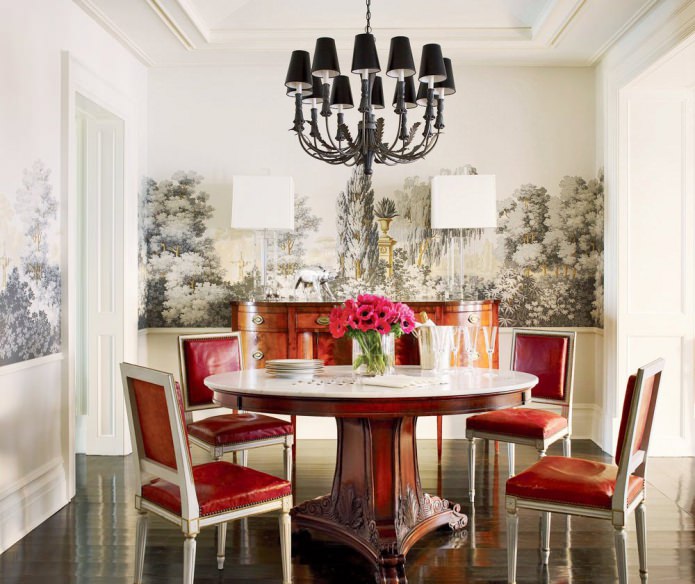
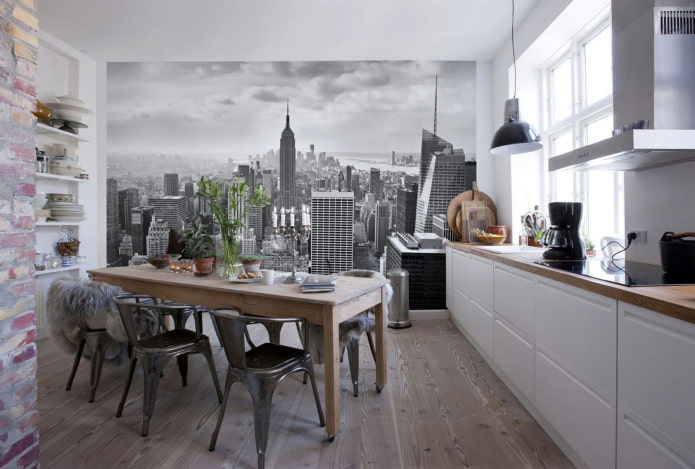
- Stone (natural or artificial). The most durable and long-lasting material. A stone countertop can be of almost any shape, and in the case of using artificial stone – and color. It is a beautiful, damage-resistant material that does not absorb dirt. It is easy to wash, and colonies of bacteria or fungi do not form on it.
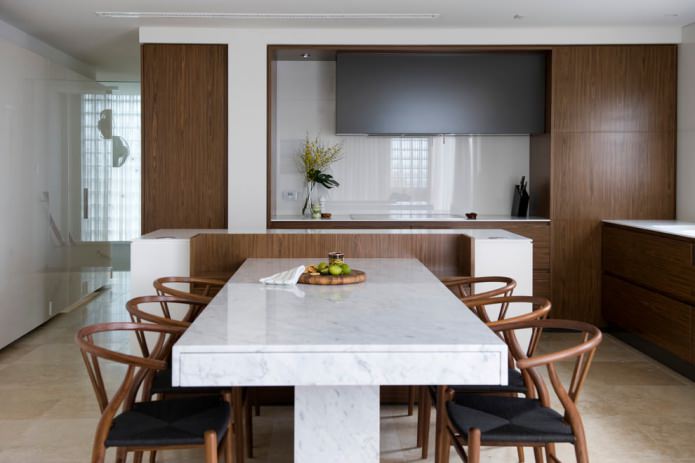
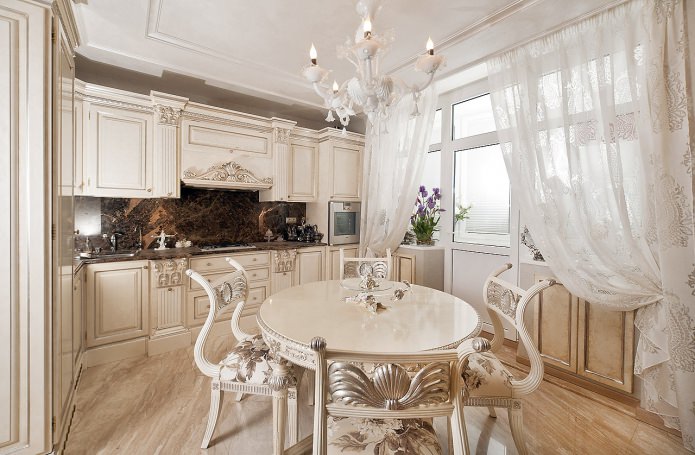
- Glass. Glass tables occupy a special place in the kitchen interior. They look very elegant and can decorate any kitchen. In a large kitchen-dining room, they will emphasize exclusivity and add shine, and in small rooms, thanks to the “invisibility” effect, they will not take up much space.
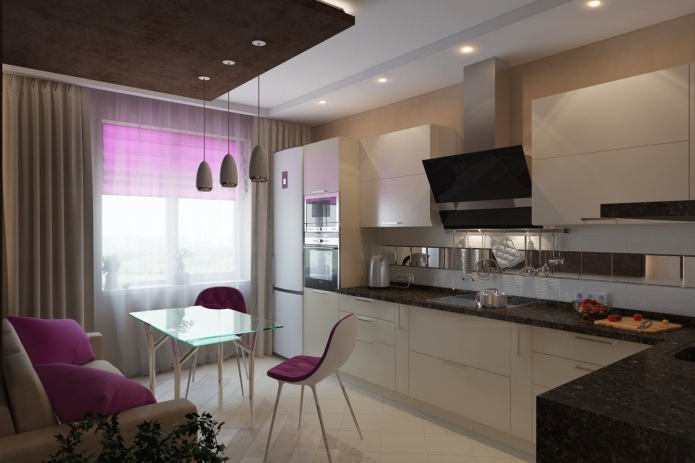
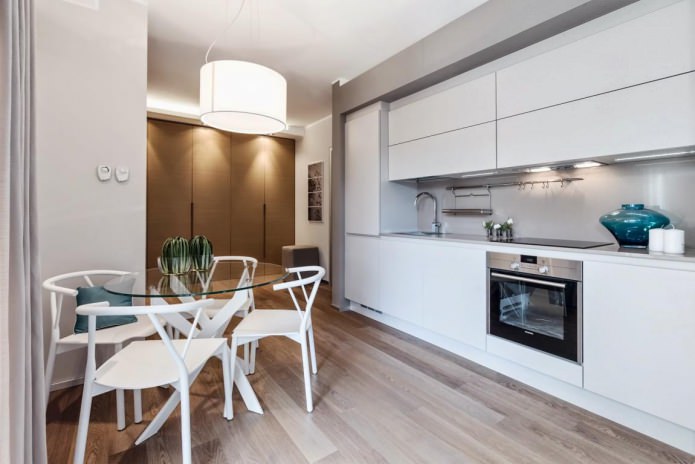
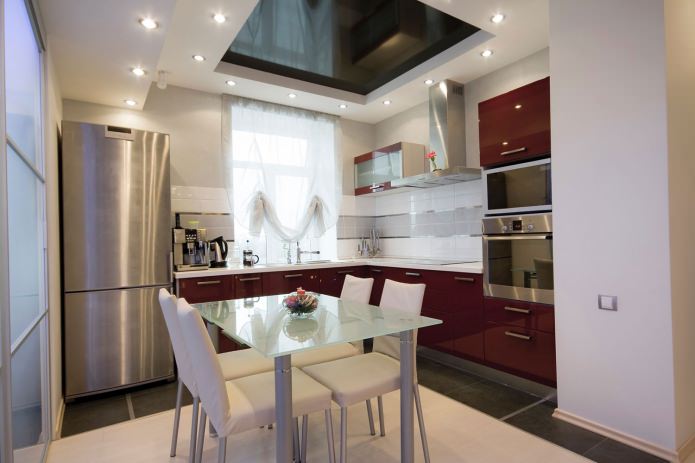
- Ceramic tiles. A tiled tabletop looks very impressive. It is easy to care for such a table – just wipe it with a damp cloth. The tiles can imitate wood or natural stone, such as marble. The tabletop can also be decorated with patterns or mosaics of small tiles. An interesting interior solution is a tile on the countertop that matches the tile on the kitchen “apron”.
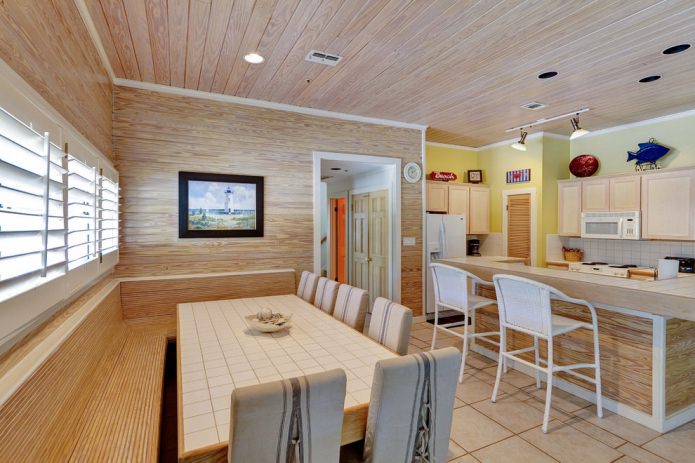
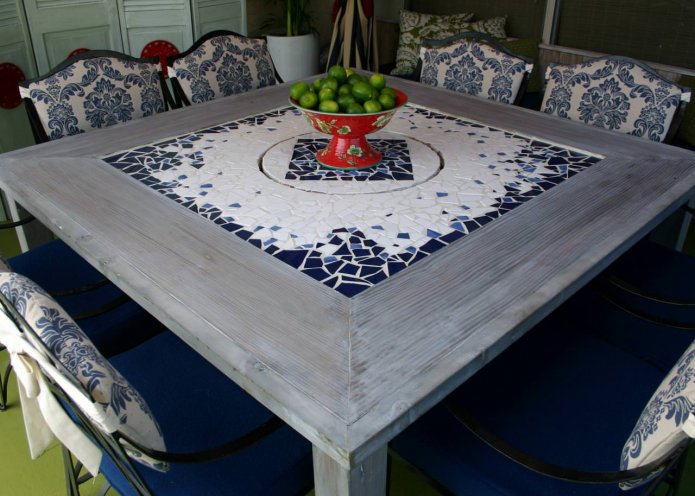
- Plastic. A material that is becoming increasingly popular. Its advantages are lightness, ease of maintenance, relatively low cost, the ability to choose a table of almost any color or none at all – transparent. Modern plastic is resistant to moisture and temperature, as well as UV radiation, which means that it has a fairly long service life.
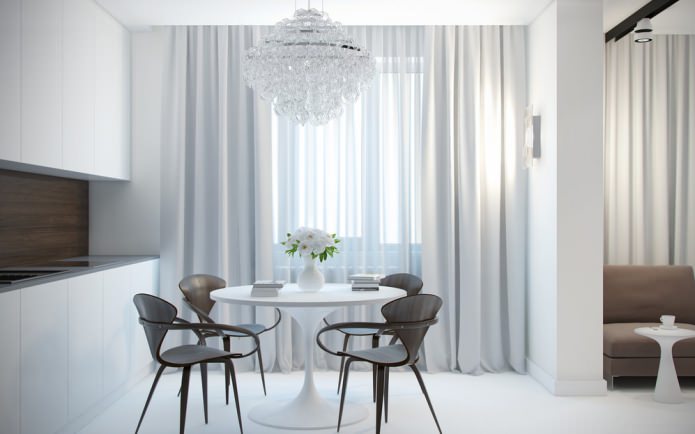
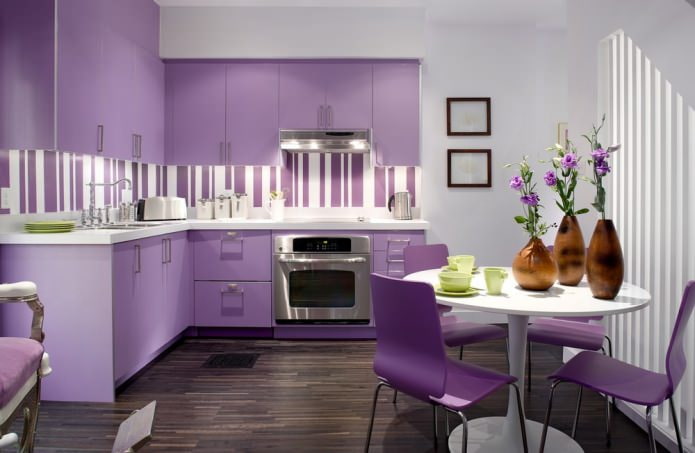
There are also models made of combined and exotic materials, for example, from a cut of wood or a combination of glass and leather. Such tables are quite expensive and are used in kitchens with exclusive interiors.
Table color in the kitchen interior
The color of the tabletop should be selected taking into account the style in which the kitchen is decorated. Often the color is determined by the material, but there are options here too. For example, a wooden table can be left natural, covered with a protective compound.
In this case, the color of the wood and its texture will be one of the decorative elements of the decor. This is appropriate in “rustic” styles, such as country, Provence, loft style, and some others. However, if you want to get an interior in a strict and restrained style, for example, minimalism, you can paint a wooden table to match the color of the furniture and walls so that it does not stand out against the background of the surrounding environment.
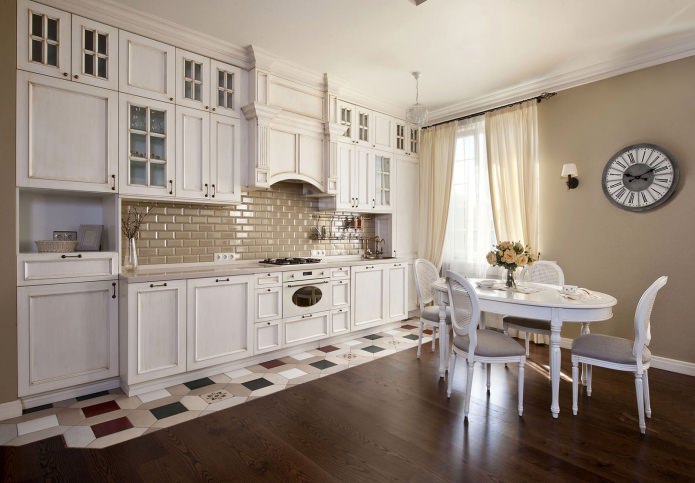
The dining group can be the dominant element of the interior, while a contrasting and fairly bright color is chosen for it. For example, with white walls and furniture, the table can be bright red or orange. Everything depends on the chosen style and your taste.
A white table in the kitchen interior is the most universal solution. It will look organic in both classical and modern styles.
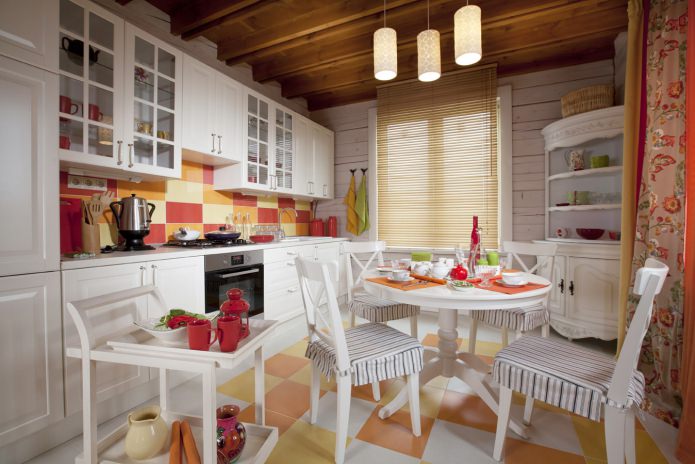
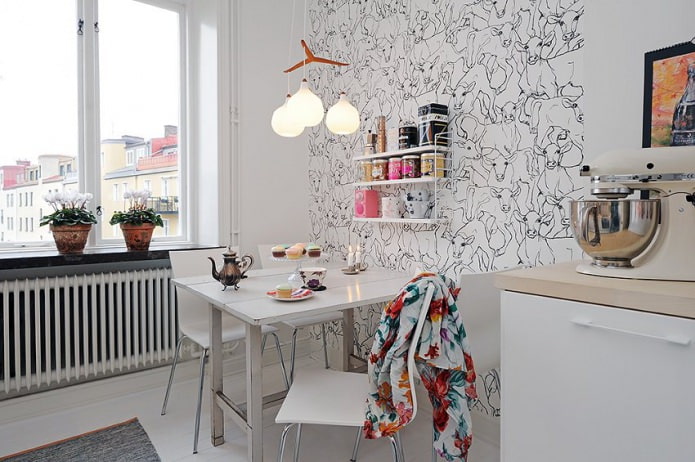
The shape of the dining table in the kitchen interior
The shape of the table affects not only its performance, but also its perception in the interior. Let’s consider the possible options.
- Rectangle. The most traditional, roomy and convenient shape. You can seat quite a lot of people at such a table, it is convenient to place it against the wall, it takes up little space, especially when compared to round tables. You can put it in the corner or lean it against one of the walls with its end side, thus dividing the room into conditional zones.
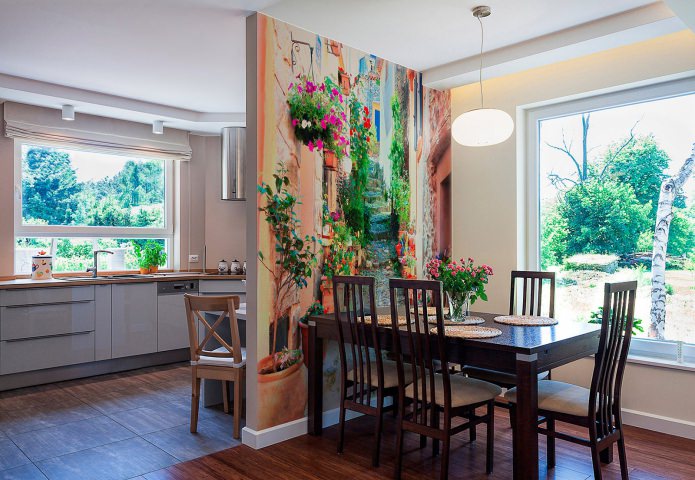
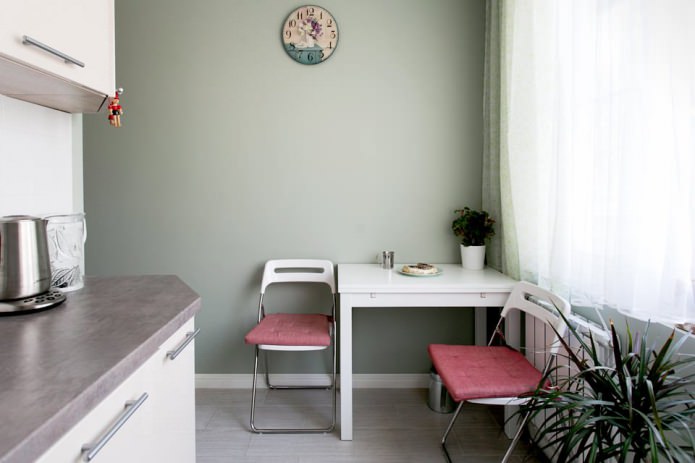
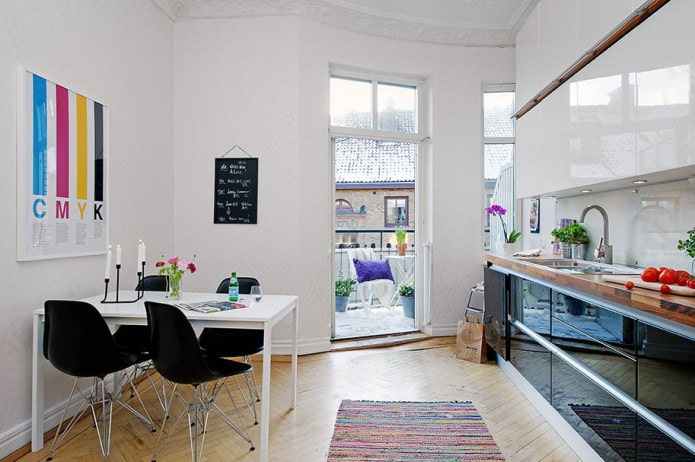
- Oval. Tables of this shape have significant dimensions, since their width cannot be less than 90 cm, and their length exceeds 110 cm, and usually even more. They are suitable only for large kitchens, because there must be enough space for sitting or walking around (at least 80 cm) before the furniture.
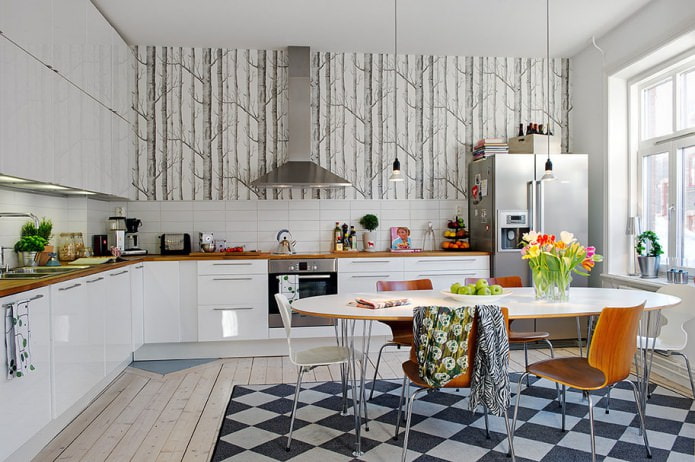
- Circle. A round table in a kitchen interior looks very elegant, but is quite demanding in terms of placement – there should be at least 80 cm on all sides of it to the nearest obstacle, as in the case of an oval table, otherwise it will be inconvenient to move around.
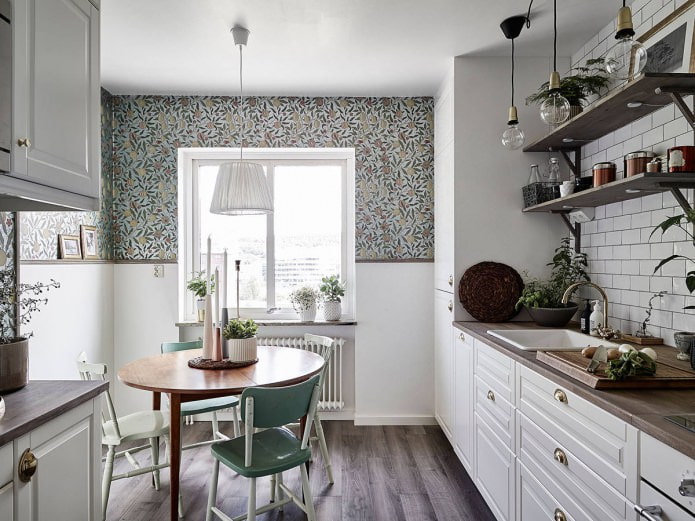
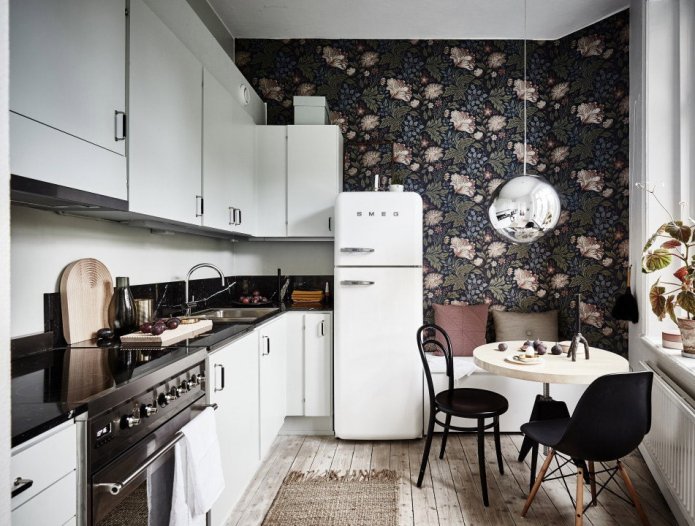
- Semi-oval. This type of table is not often found in the kitchen interior, but in fact it is very convenient, primarily because it has no sharp corners, which is especially valuable in small rooms. Usually, semi-ovals are placed in the center of the dining area, with the straight side adjacent to the wall.
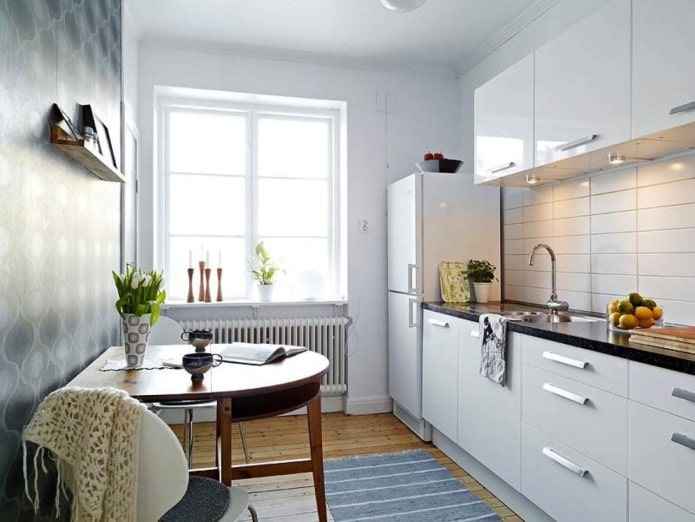
Advice: If you want your kitchen table in the kitchen interior to always look decent, follow the rules for caring for it. At least once a week, it is necessary to wipe not only the tabletop, but also the base with a damp cloth, removing dirt with mild detergents. Never use a knife or other sharp objects without placing a special board under them – it is easy to scratch the table, but it is difficult, and sometimes impossible, to return it to its original appearance.
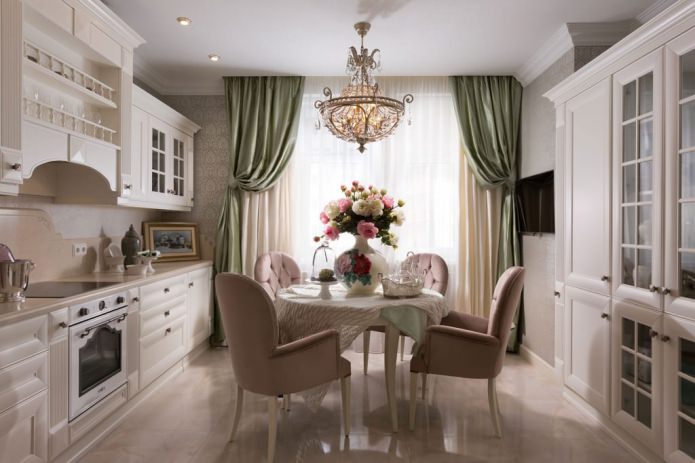
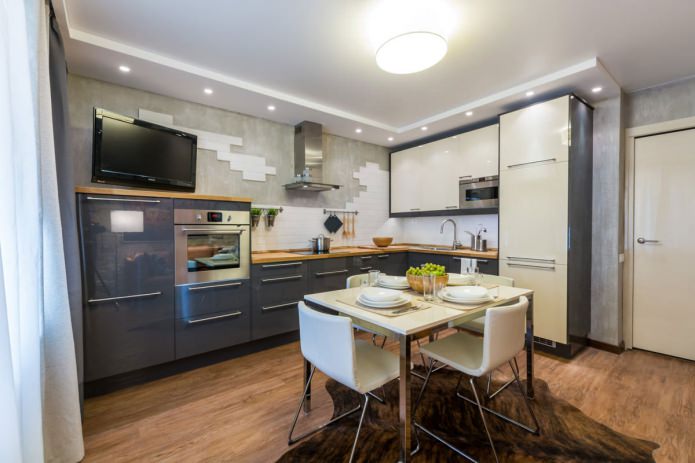
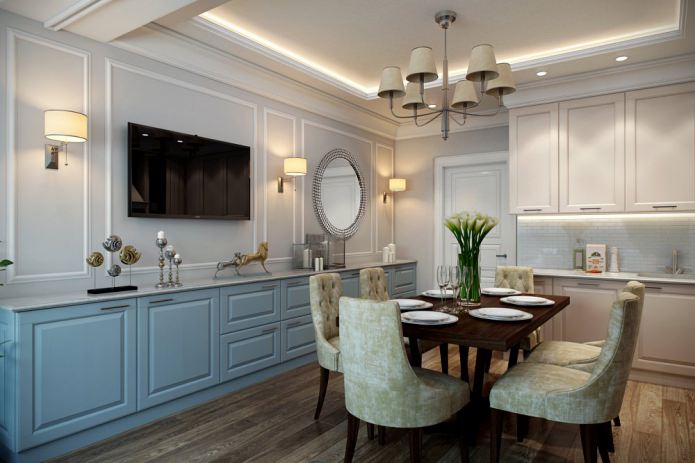
Now reading:
- Installation of ceiling tiles: selection of materials, preparation and stages of work. – Interiordrive
- IKEA kitchens: current trends of 2020 and photos in the interior.
- Key Rules for Planting and Caring for Hydrangea for Its Lush Bloom
- How to effectively close pipes in the toilet? Top methods and 4 detailed instructions with photos.
- Lighting ideas for hallways and corridors: 55 photos, recommendations for choosing